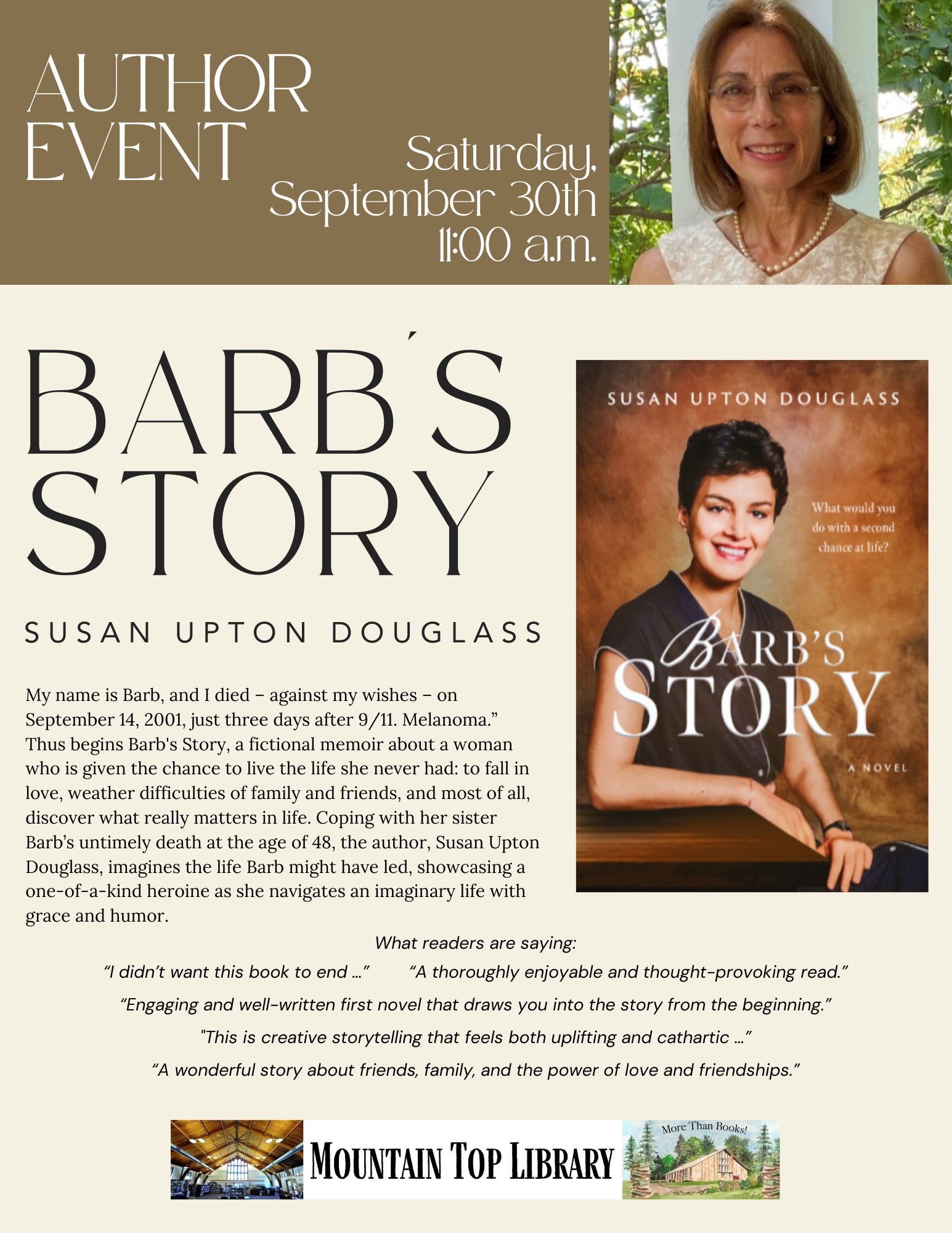The overarching theme of the story is second chances, but there are other themes as well that can be explored.
Medical issues
1. Access to medication: In real life, Barb experienced frustration in obtaining effective medication, even when she was accepted in a clinical trial. The United States has one of the safest and most carefully controlled drug testing programs – but at what cost (millions of dollars for the clinical trials, not to mention the human cost). Is there a better way?
2. Alternative medicine: In this story, Barb meets Eddie and decides to take his supplements. They neutralize the cancer, and she lives. But supplements can be marketed at high prices, with no proven record of success and in some cases giving people unfounded hope at great expense. Alternative medicine can be incompatible with the physician-recommended course of treatment, causing the patient to choose between them. In addition, there are some practices that are not embraced by the traditional medical community, such as acupuncture, chiropractic, homeopathy, and ayurvedic medicine, that are centuries old and have demonstrated relief from some ailments (not cancer, but perhaps particularly for neuromuscular injuries). Do you think there should be more emphasis in the medical community, starting with medical school training, in alternative medicines?
3. Physician’s time with a patient: Marc explains that under the demands of his practice, controlled largely by insurance requirements, he is not given the opportunity to spend an extended amount of time with his patients to get to know them. This is not always the case, and some doctors can choose their patients and how they address their health care issues (I am fortunate to know several such physicians). However, as a general matter, most patients experience a briefer visit than they would wish, with much of the time spent by the physician asking questions and making notes in a computer or other device. How does this impact your own healthcare issues?
4.Pain management: This is an ongoing issue that challenges even the most dedicated physicians. Marc states that he is constantly making decisions about the balance between staving off pain to allow for healing on the one hand, and prescribing too much medication that interferes with full functioning or in the case of this story, addiction and death on the other. We know of court cases involving opioid drug manufacturers marketing high use of their products to the medical community, including an $8 billion settlement of claims by Purdue Pharma. How do we as consumers play a role in avoiding tragedies that come from addiction?
Online Dating
5. Self-description: Barb struggles to write an ad that succinctly describes herself, her hopes and dreams, to attract the right sort of person. Take a few moments to describe yourself in a way that will signal to others the kind of person you are, and the kind of person you want to meet.
6. Safety in dating: In this story, Barb is fortunate that the worst thing that happens to her on an in-person date with someone she met online is returning to an empty table after a bathroom break, with her date having paid the bill. Other people have experienced terrible or dangerous situations. If you or someone you know plans to meet in person someone from an online source, what would be a good safety plan?
Friends and Family
7. Getting people together: Barb’s friends are a key component of her life. She made time to talk, plan special events, and introduce people to each other from different facets of her life. At her funeral, seven people said that she was their best friend. How might you cross-pollinate different groups of friends?
8. Networking: Even in business, Barb emphasized the importance of meeting other people and allowing the synergies to develop into real relationships. In the story, the networking event was an example of getting different people together so they can all benefit (it’s the friend of a friend concept in action). How might you plan something in the current hybrid work environment? Do online or social media get-togethers add value?
9. Overcoming prejudices: As the story unfolds, we learn that Barb is not keen about men who wear short-sleeved “blouses” or brown tie shoes (the soft kind of shoes, not the dress wing-tips), or those with yellow teeth, scruffy beards, or who are in certain professions (medicine, hospitality). Can you identify people you typically avoid, and then think if you know any people in that group who you like, notwithstanding their negative characteristics?
10. Black sheep: Barb thought it was important to spend time with family, even those with whom she did not feel a natural affinity. She worked hard to find common ground, and to tamp down her inclination to be judgmental. In this current atmosphere of social and political polarization, how do you deal with relatives and friends with whom you strongly disagree?
Things Outside Your Control
11. Make a plan: Barb felt enormous frustration over things outside her control. For example, how do you make people who retire feel engaged and productive? How do you turn “couch potatoes” into active people who get up and do things? It’s important to stay physically and mentally active. Do you have a plan for retirement? Do you have a plan to “make the world a better place”?
12. Know your limitations: In the story, Barb says that she learned this lesson time and again: you cannot make people change, you cannot make them do as you would like. When people you love are self-destructive, do you try to help, them not withstanding the difficulties involved? Do you know when to stop?
